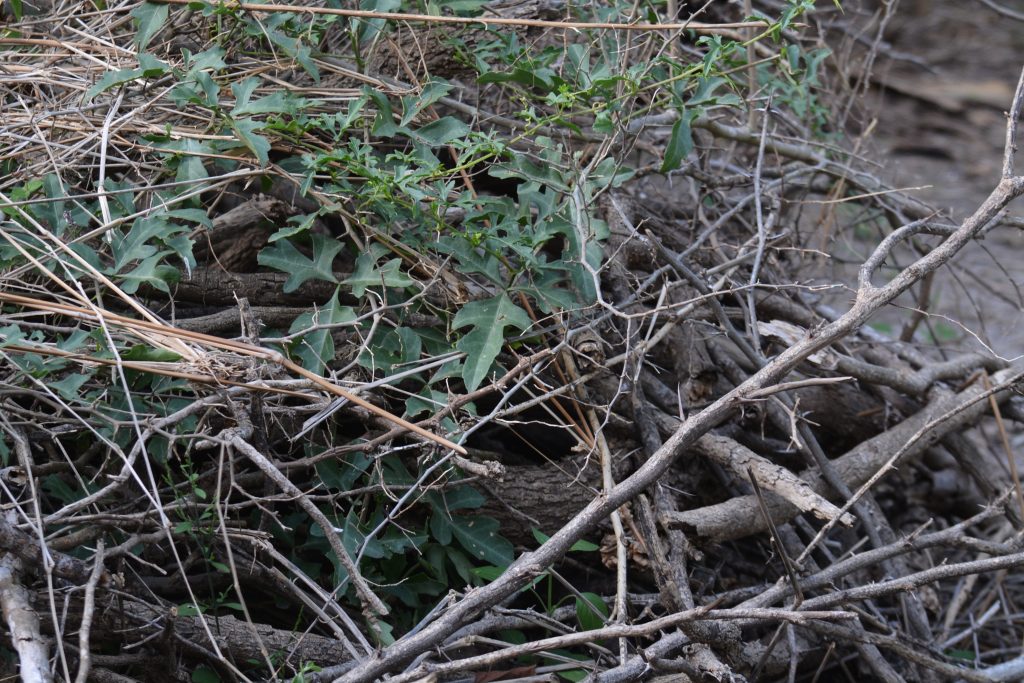
By mid-summer, this brush pile will be camouflaged by flowering possum grape and dicliptera, which will attract butterflies and hummingbirds.
Brush piles can be a fascinating way to observe wildlife in your own back yard
Story and photos by Anita Westervelt, Texas Master Naturalist
Brush piles can provide shelter to small mammals, reptiles, amphibians and birds, especially in urban areas where natural cover might not be available. They also can provide protection for animals such as the Texas Tortoise and endangered Texas Horned Lizard during cold spells and extreme heat.
Ultimately, decayed matter from brush piles will enrich the soil. While the decaying process takes place, the pile itself is fascinating as it quickly becomes its own unique eco system. Decomposing vegetation provides a habitat for invertebrates like spiders, insects and worms that will in turn be eaten by birds and other critters.
Brush piles are cheap and easy to build. Ideally, they should be about 25 feet from human activity. If that isn’t possible, under the canopy of a small tree or sprawling bush, or corner of a garden or yard can serve as well.
Downed branches are a helpful start. If it’s time to prune a tree, use those branches instead of hauling them to the curb to end up in a landfill where they serve no environmental purpose.
Wildlife will use brush piles of all sizes. Larger ones attract more diversity. To begin, cut the largest branches to three or four feet in length for the base. Leave space between them on the ground for critter access and hiding. The second layer can be crisscrossed. You are now ready to begin stacking progressively thinner and springier branches and then vegetative debris on top.
Top off the pile with something heavy to weight it down such as a log that wasn’t used for the base. If it’s time to cut back an overgrown prickly pear, toss the pads on top. Cactus pads and invasive Guinea grass will not propagate as long as they are not touching the soil. Some animals use those for food.
After the brush pile is built, plant flowering vines like climbing milkweed, passion flower, possum grape or old man’s beard around the base to cover and camouflage the debris. Native nectar plants around it like Texas lantana, butterfly weed, or mistflower will attract butterflies, and dragonflies. Visit www.rgvctmn.org.
The Rio Grande Valley Chapter Texas Master Naturalist develops knowledgeable volunteers dedicated to the study and conservation of natural resources and natural areas in the Lower Rio Grande Valley and helps the natural world through service, outreach and education.
